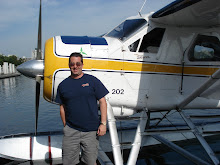

Tadeusz Ciastuła was born in Kazimierz Dolny in Poland. He graduated from the Faculty of Mechanical Engineering at Warsaw Technical University with a degree in mechanical engineering, specialising in aviation. During this period, he was a success at gliding. Between 1936-39, he worked at ITL in Warsaw as a test pilot. When war broke out, he was evacuated to Romania and then to France, where he served at the Observer and Gunnery School in Bordeaux. After the fall of France, he evacuated to the UK, where in 1941 he was appointed to the Department of Applied Aerodynamics at the Royal Aircraft Establishment at Farnborough.
He also flew in 302 Fighter Squadron of the Polish Air Force and 65 Fighter Squadron of the RAF. At the end of 1944, he was sent to the U.S. to learn about transport aircraft for paratroops and how to use them. In the spring of 1947, he joined the design office of the Cierva Aircraft Company in Southampton. There he designed a light helicopter, the Cierva W.14 Skeeter. Following the acquisition of Cierva in 1951 by Saunders-Roe (Saro),he designed the Saunders-Roe P.531 helicopter. Saro was acquired in 1959 by the Westland factory in Yeovil, Somerset. Whilst atWestland he was involved in the design of the Scout and Wasp helicopters. Ciastuła was the driving force for the G.13 design which was produced as the Lynx military helicopter. In addition, he participated in the modification of the Sikorsky S-58 - the Wessex, the Sikorsky S-61 - Sea King, and he adapted the Puma helicopter, which was produced under license from the French, to British requirements.
In 1965 he was awarded the Royal Aero Club's Richard Fairey/ Louis Breguet Memorial Trophy for his work with VTO aircraft. He was awarded the OBE in 1970.
